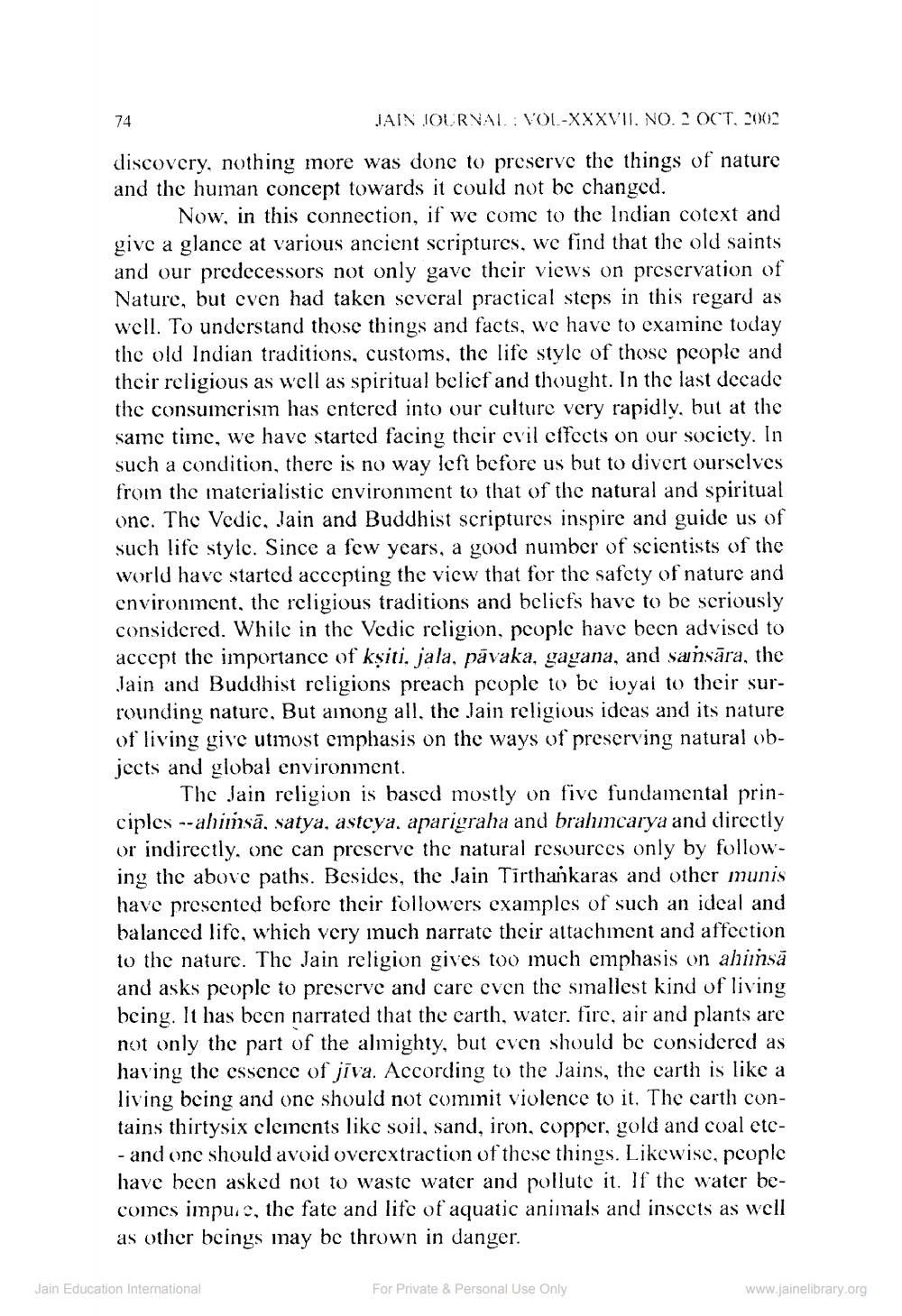Book Title: Jain Journal 2002 10 Author(s): Jain Bhawan Publication Publisher: Jain Bhawan Publication View full book textPage 7
________________ 74 JAIN JOURNAL : VOL-XXXVII, NO. 2 OCT. 2002 discovery, nothing more was done to preserve the things of nature and the human concept towards it could not be changed. Now, in this connection, if we come to the Indian cotext and give a glance at various ancient scriptures, we find that the old saints and our predecessors not only gave their views on preservation of Nature, but even had taken several practical steps in this regard as well. To understand those things and facts, we have to examine today the old Indian traditions, customs, the life style of those people and their religious as well as spiritual belief and thought. In the last decade the consumerism has entered into our culture very rapidly, but at the same time, we have started facing their evil effects on our society. In such a condition, there is no way left before us but to divert ourselves from the inaterialistic environment to that of the natural and spiritual onc. The Vedic, Jain and Buddhist scriptures inspire and guide us of such life style. Since a few years, a good number of scientists of the world have started accepting the view that for the safety of nature and environment, the religious traditions and beliefs have to be seriously considered. While in the Vedic religion, people have been advised to accept the importance of kşiti, jala, pavaka, gagana, and sansāra, the Jain and Buddhist religions preach people to be loyal to their surrounding nature, But among all, the Jain religious ideas and its nature of living give utmost emphasis on the ways of preserving natural objects and global environment. The Jain religion is based mostly on five fundamental principles --ahińsā, satya, asteya, aparigraha and brahmcarya and directly or indirectly, one can preserve the natural resources only by following the above paths. Besides, the Jain Tirthankaras and other munis have presented before their followers examples of such an ideal and balanced life, which very much narrate their attachment and affection to the nature. The Jain religion gives too much emphasis on ahiinsă and asks people to prescrve and care even the smallest kind of living being. It has been narrated that the earth, water, fire, air and plants are not only the part of the almighty, but even should be considered as having the essence of jīva. According to the Jains, the earth is like a living being and one should not commit violence to it. The earth contains thirtysix clements like soil, sand, iron, copper, gold and coal etc- and one should avoid overextraction of these things. Likewise, people have been asked not to waste water and pollute it. If the water becomes impure, the fate and life of aquatic animals and insects as well as other beings may be thrown in danger. Jain Education International For Private & Personal Use Only www.jainelibrary.orgPage Navigation
1 ... 5 6 7 8 9 10 11 12 13 14 15 16 17 18 19 20 21 22 23 24 25 26 27 28 29 30 31 32 33 34 35 36 37 38 39 40 41 42 43 44 45 46 47 48 49 50 51 52 53 54 55 56 57 58 59 60 61 62 63 64 65 66
